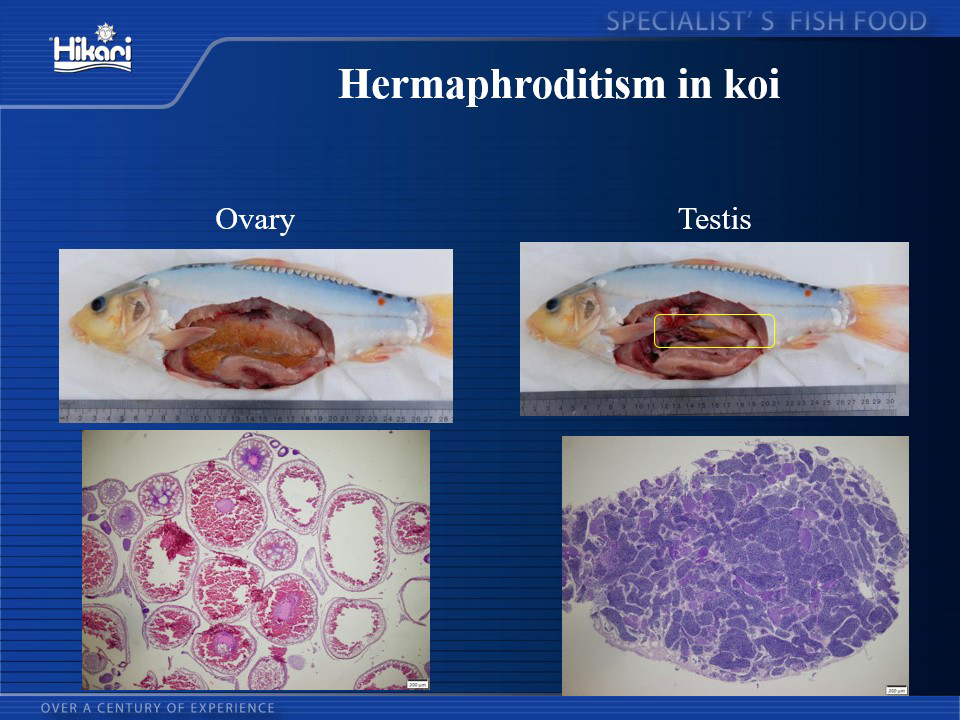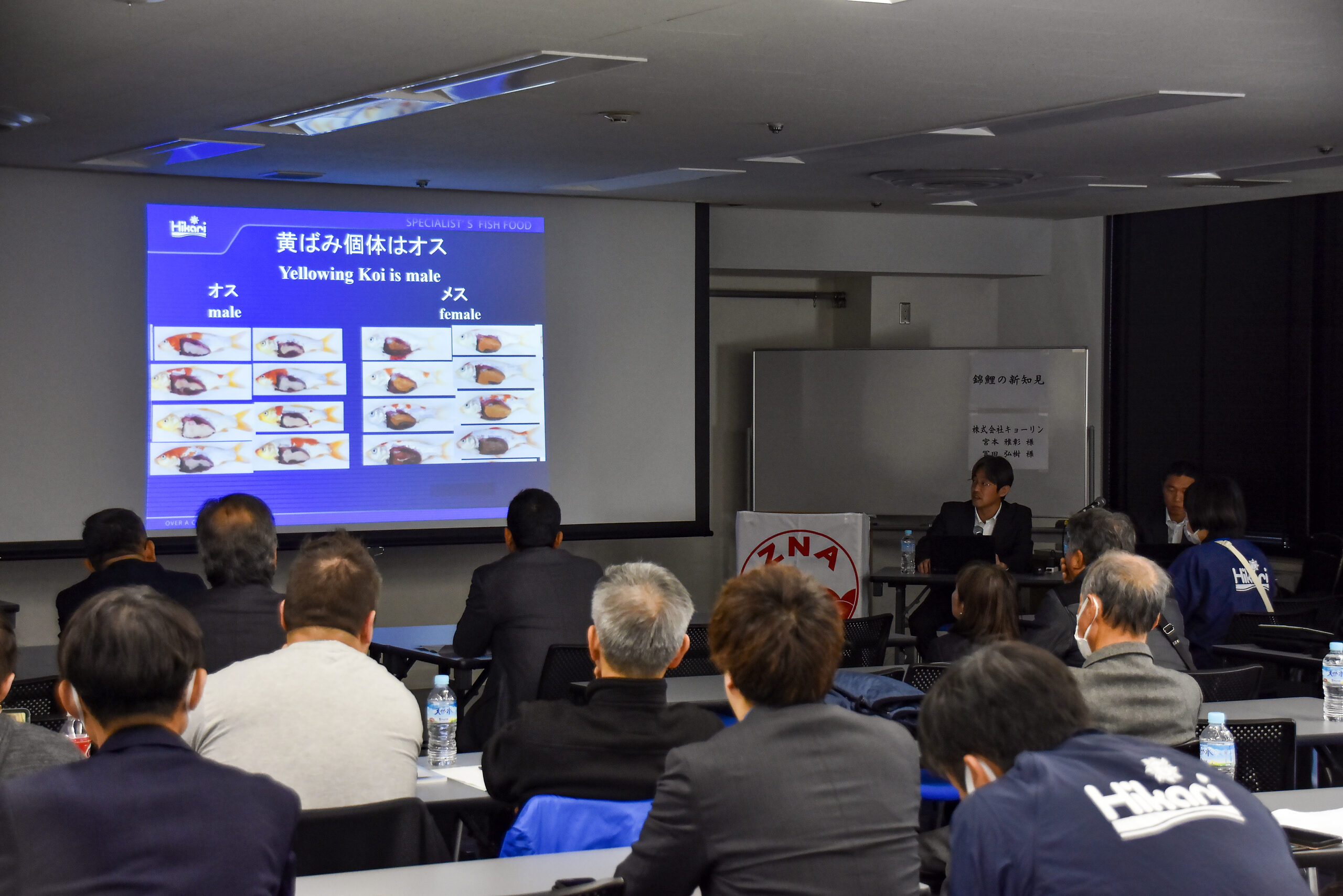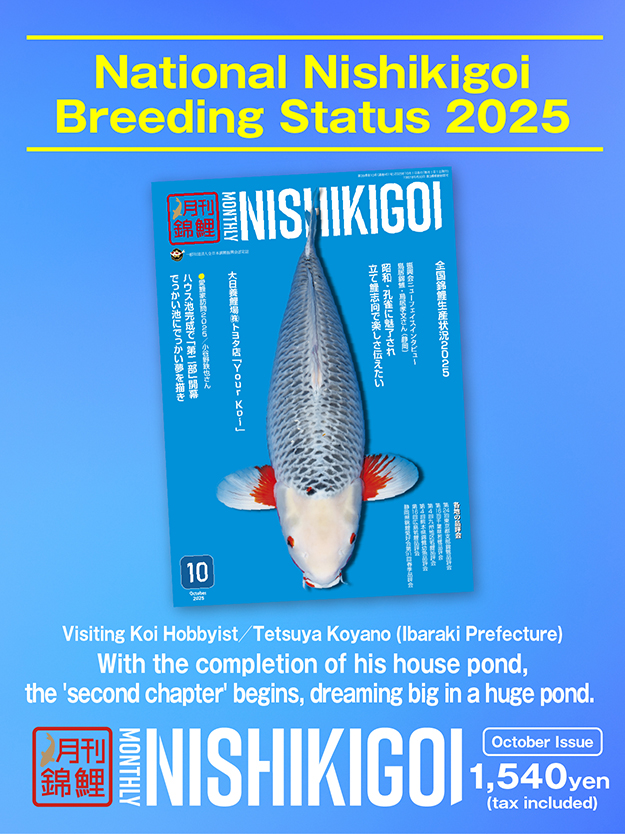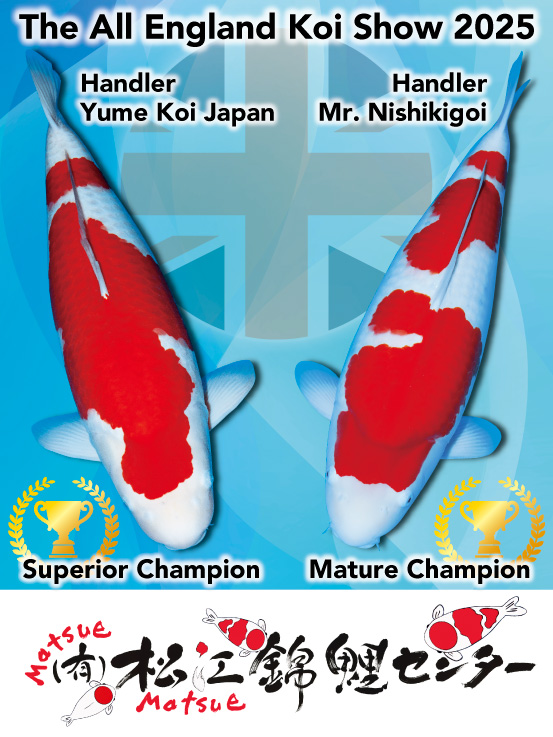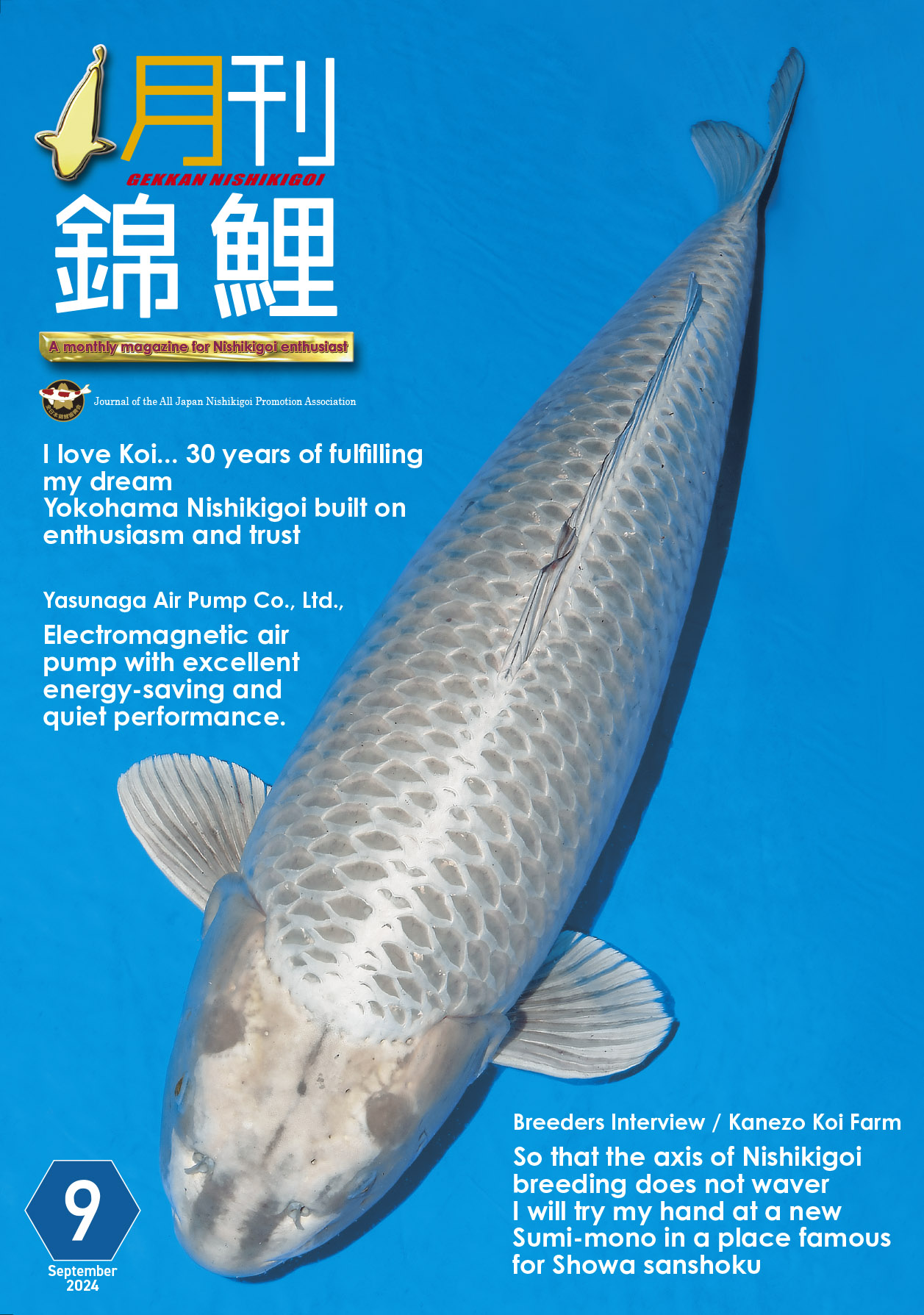Next, I will talk about the timing of yellowing. As many of you may know, the way koi yellow can change depending on the season. To investigate how the yellowing changes throughout the year for both males and females, we conducted monthly dissections from December 2023 to November 2024, examining the yellowing in both sexes (⑨). The months with a higher number of yellowed fish are marked in yellow. It was clear that the months when the males and females experienced yellowing were distinct. Males showed yellowing in all months except from July to September, while females only showed yellowing during July to September. This period is the key point, but what exactly is happening? Spawning is likely the event responsible for this. The points shown in the graph (⑩) represent individual koi, indicating the weight of their gonads (testes or ovaries) relative to their body weight. The higher the position, the heavier the gonads of the individual. The line graph represents changes in water temperature.
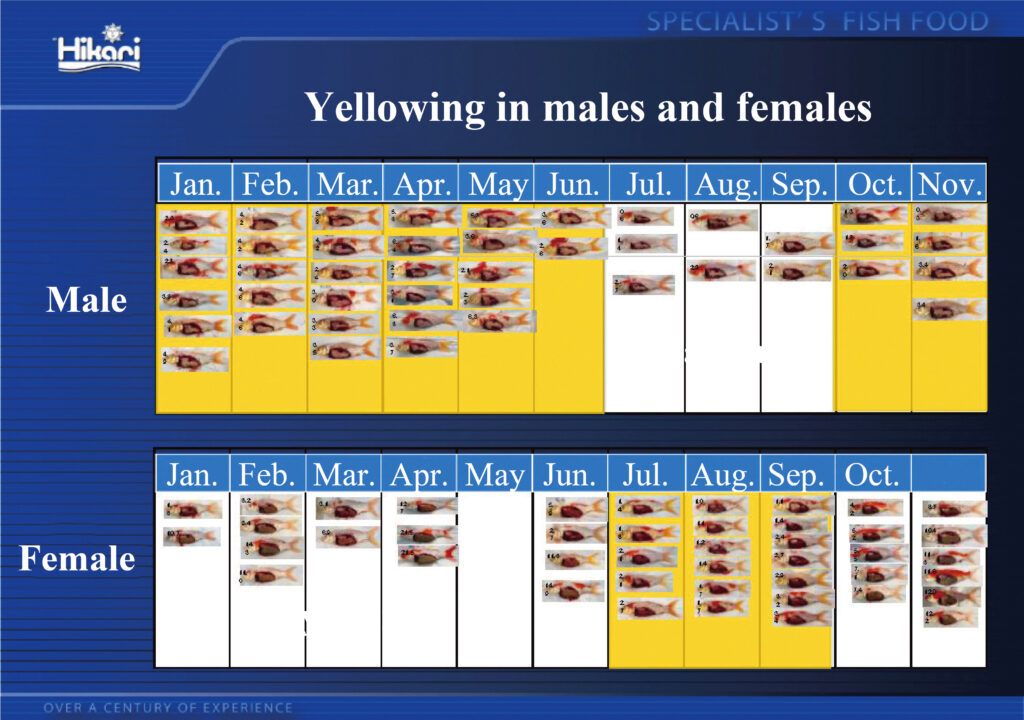
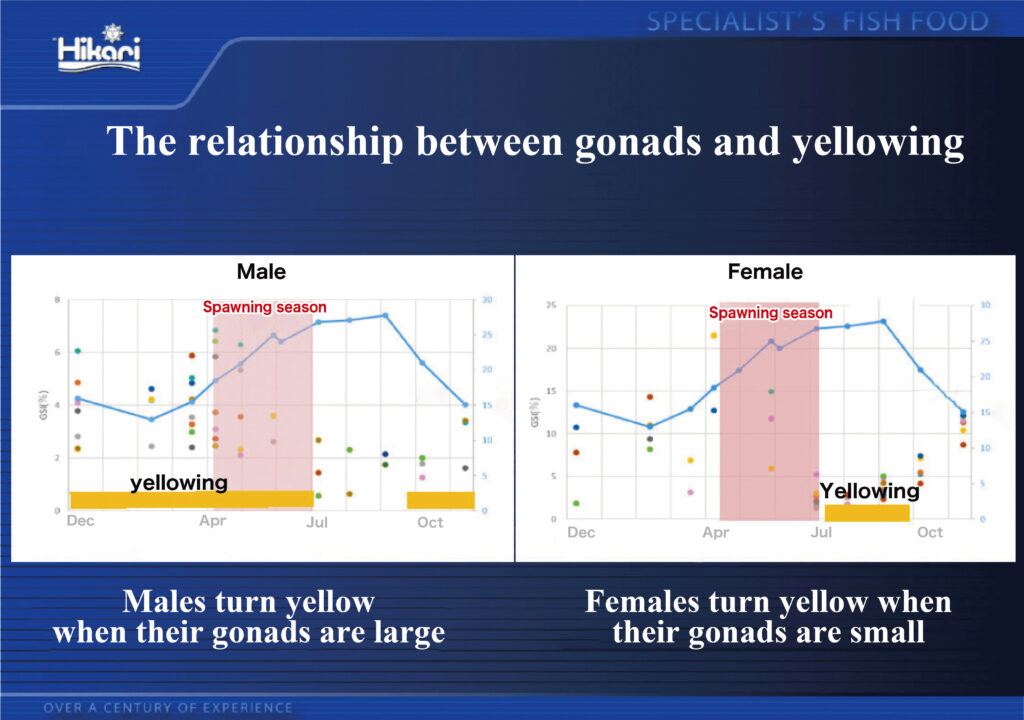
Let’s look at the females. Their ovaries are heaviest during the spawning season and become the smallest from July to September after spawning. The yellowing is most intense as the ovaries shrink. Now, for the males. Their gonads are the smallest from July to September, after the spawning season; during this period, the yellowing disappears. It is suspected that sex hormones play a role in this process—when hormone levels are high, yellowing appears. In contrast, yellowing is less likely to occur during the low-hormone period from July to September.
I have summarised the reasons for the differences in yellowing between males and females (⑪). It is only a hypothesis and may not be entirely correct, but the yellowing components absorbed from food pass through the digestive tract and move into the plasma. In females, the yellowing components accumulate through the ovaries’ lipids, causing the yellowing in the plasma to decrease, resulting in less yellowing on the body surface.
On the other hand, males do not naturally have ovaries that accumulate yellowness, so the yellowed blood serum continues to exist as it is. Therefore, it is believed that the yellowing may deposit on the skin, causing the fins and head to turn yellow. Additionally, since male sex hormones promote yellowing, it is thought that yellowing becomes more likely when the testes are large.
To summarise the findings, males experience a more extended period of yellowing than females, and in yellowed koi, the blood plasma has turned yellow (⑫). The timing of yellowing is reversed between males and females. In females, yellowing is suppressed as the ovaries develop, whereas in males, yellowing occurs when the testes are developed. It is believed to be influenced by sex hormones.
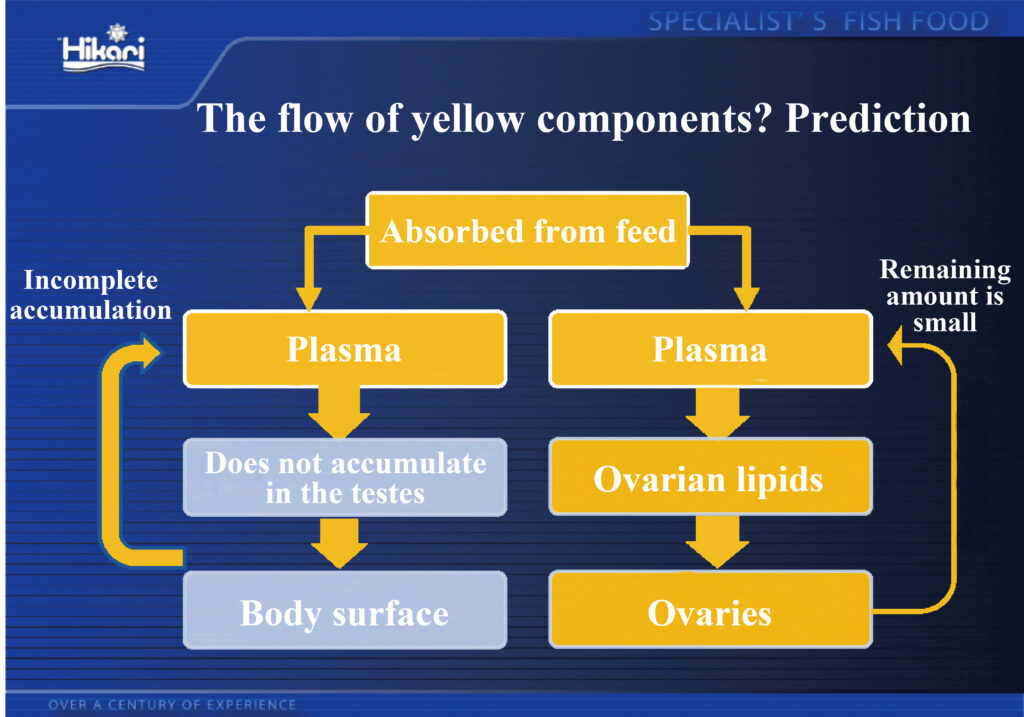
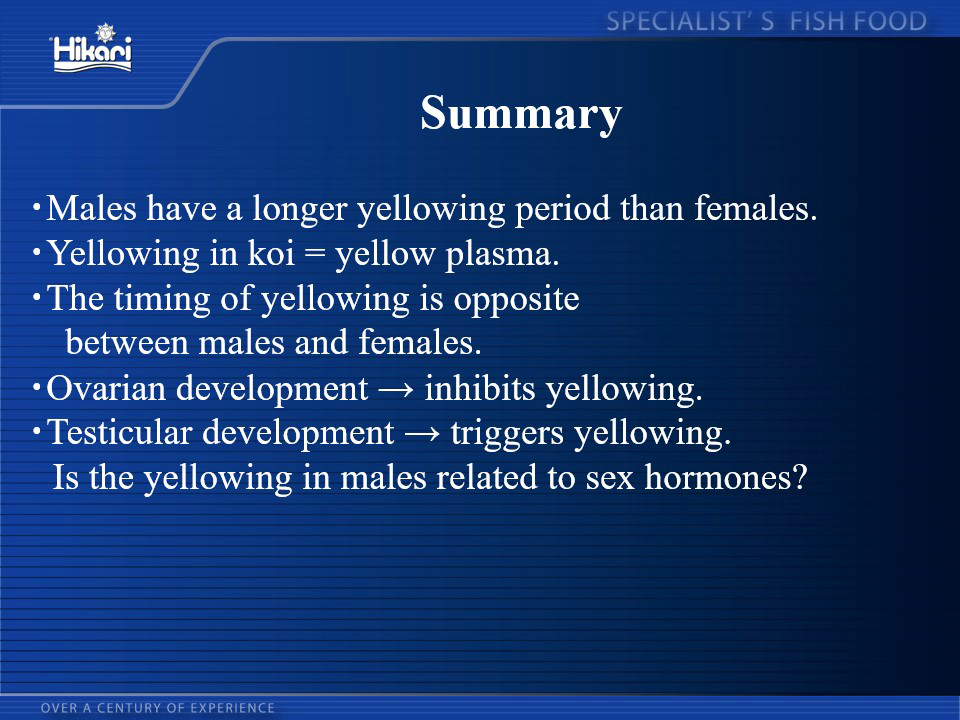
As a side note regarding the gonads of koi, during another experiment involving koi dissection, we discovered an individual that appeared to have both ovaries and testes (⑬). Since it was not clearly visible to the naked eye, we tried staining the specimen, and it was confirmed that the individual had both testes and ovaries, revealing that it was a hermaphroditic koi. Previously, we heard from some Nishikigoi breeders that they assumed a koi was male because it was releasing sperm, only to find later that it laid eggs. They wondered if koi undergo sex changes, but it is likely that such an individual was hermaphroditic. Some individuals have an unclear sex, and they could potentially be hermaphroditic.
